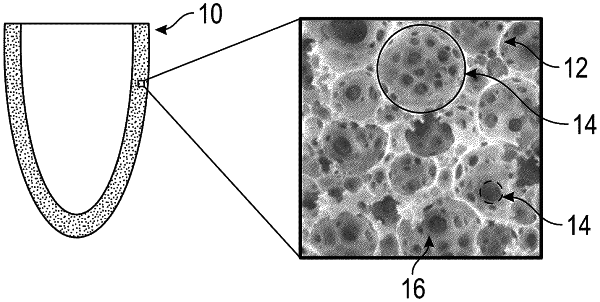| CPC A61F 2/7812 (2013.01) [B29C 39/003 (2013.01); B29C 39/026 (2013.01); B29C 44/3403 (2013.01); B29C 44/56 (2013.01); C08F 2/32 (2013.01); A61F 2002/30024 (2013.01); A61F 2002/7818 (2013.01); A61F 2002/7837 (2013.01); B29K 2033/04 (2013.01); B29K 2033/26 (2013.01)] | 18 Claims |

|
1. A method for producing a material comprising:
producing interconnected pore spaces within a continuous phase of a hydrophobic polymer by employing internal phase emulsion templating, the internal phase emulsion templating selected from medium internal phase emulsion (“MIPE”) templating and/or high internal phase emulsion (“HIPE”) templating;
producing a hydrophilic pore lining from hydrophilic chemical end groups of a second polymer lined within the interconnected pore spaces of the hydrophobic polymer, the hydrophilic chemical end groups produced from a hydrophilic monomer polymerized selectively at a surface of the hydrophobic polymer, wherein an aqueous phase containing a hydrophilic monomer is dispersed into the continuous phase of the hydrophobic polymer prior to Polymerization of the hydrophobic polymer; and
crosslinking together the continuous phase of the hydrophobic polymer to the hydrophilic pore lining via covalent interaction using a chain crosslinker.
|